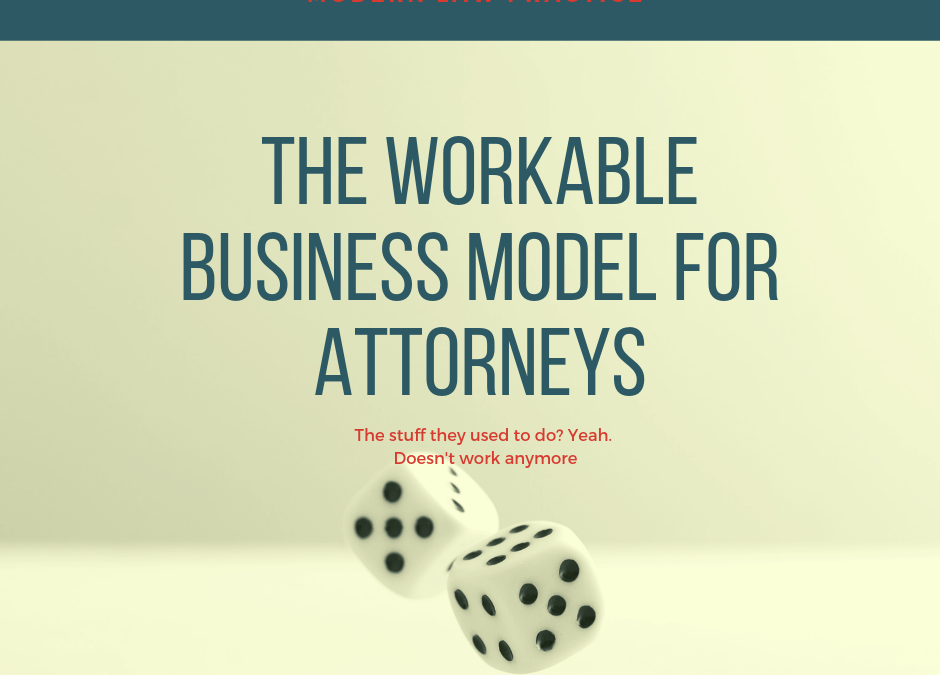The foundation of your firm may not be what you think it is.
A peaceful, predictable, and fun way to practice.
Every quarter, our firm gathers for a retreat where we talk about what’s working and not working in the organization. We identify opportunities, tackle issues and obstacles, and assign people within the organization to champion an issue and solve it within the following three months. At our last retreat, the primary issue discussed was front desk coverage and greeting clients when the receptionist calls out sick. That was our biggest issue. We are on track to grow another 20% this year as we have year over year for the last ten years. We are not without our problems, but we have peace, predictability and a lot of fun. We know when we are off track and we know how to correct the problem. There is a formula you can follow to achieve this type of law firm. Yours will be different from mine, but it will give you the control over your firm that most attorneys struggle to achieve. It isn’t magic and it takes hard work and diligence, but you can do it. Attorneys are great at following directions.
And herein lies the crux of the problem. There is no workable business model for attorneys to follow. The model that was developed by our predecessors has been steadily declining for decades. As the internet transformed the way we do business, attorneys have largely been left behind to flounder on their own. The vast majority of lawyers are solos or part of small firms, siloed and left to figure out a workable business model while also trying to juggle a full case load and a personal life. It feels impossible, probably because it is.
I’m an attorney. But I have not had a full case load since starting Modern Law ten years ago. The vast majority of that time has been spent by me on the business, conducting experiments, testing and talking with other entrepreneurial attorneys across the country. There are some very well-run law firms across the country and with the increased communication from conferences and communities, we have come together to unveil the curtain and share real data. It works. We have peace, predictability, and fun doing what we do. All you need to do is follow the formula.
Building your law firm is like building a pizza. You must start with a great crust. If pizza crust is terrible, the whole pizza is terrible and you will probably throw it away mid slice, or just feel disgusting after eating it. Your pizza crust is your values. This is your fundamental purpose of existing. This is defining and discovering deeply held values and beliefs and turning them into a constitution that will be followed at all times.
No policy, person, or client can come into the firm or stay in the firm if they don’t share your values or if they operate outside your constitution. Several years ago, I had an employee who did not share our values. He started out appearing as if he shared our values, but after six months or so, it was clear he did not. He was exceedingly negative. He was mentally and physically spent. Despite us paying for counseling and weekly Yoga he refused to take care of himself. He insisted on working excessively and raged against clients and co-workers. Our values include growth, whole health and optimism, empathy, and communication. We have written policies that make these actions not optional. I care as much about our work environment as I do our bottom line. He had to go.
For a year, I defined and described the crust as our constitution, but it was missing a critical component. Your crust is also reality. We can’t build a firm solely on who we believe we are or who we want to be. To make real decisions we must know where we stand today. That is why your crust- values, vision, and culture all summed up into a constitution- along with data is the foundation of a firm that provides control and predictability.
Sometimes our emotions and feelings fool us and even the most even keeled attorney will make a bad decision on feelings that may only be half truth. I had a recent experience with this where I was having a bad week- maybe month. Our office had been plagued with an illness and half of the people had been out of the office and unavailable for work off and on. One attorney was out for weeks. In general, my firm had become less disciplined than I wanted it to be. These things are cyclical, we weren’t in a crisis, but it was time to become more focused. I was out for a day and was very clear in my expectations that people were to leave the office early only if their work in terms of meeting billable requirements.
The attorney who had been out most often didn’t work. He billed .2 hours – all. day. I was livid. I was ready to fire him. It was a Friday and I spent the weekend fuming. Then I ran the data. I am very interested in knowing the profitability per employee. This is best understood in terms of a percentage. How much of what a time keeper bills and collects is being used to pay that person and how much is being used for the firm. I ran his number for the quarter. It wasn’t bad. In fact, it was the exact same percentage as the employee who I viewed as my most productive team member. My feelings changed instantly. No, it wasn’t ok that he had been out as much as he had been. I needed to step up and provide a lot more guidance, management and leadership, but he didn’t need to be fired. My emotion of frustration and anger was justified but that alone would have led to a bad decision. The attorney is back at work and doing an amazing job.
This is why the crust or foundation of your firm should be a combination of values and data. This is why we have spent months working with developers to create a dashboard that can be used in your firm. Data on its own is interesting but not actionable. Our dashboard integrates with your systems using Zapier and the API of software to display the data you need most to determine if you have enough clients, what your future revenue will be, if you have a leaky sales funnel, where is the leak? The dashboard also displays employee productivity, client satisfaction, and overall firm health.


